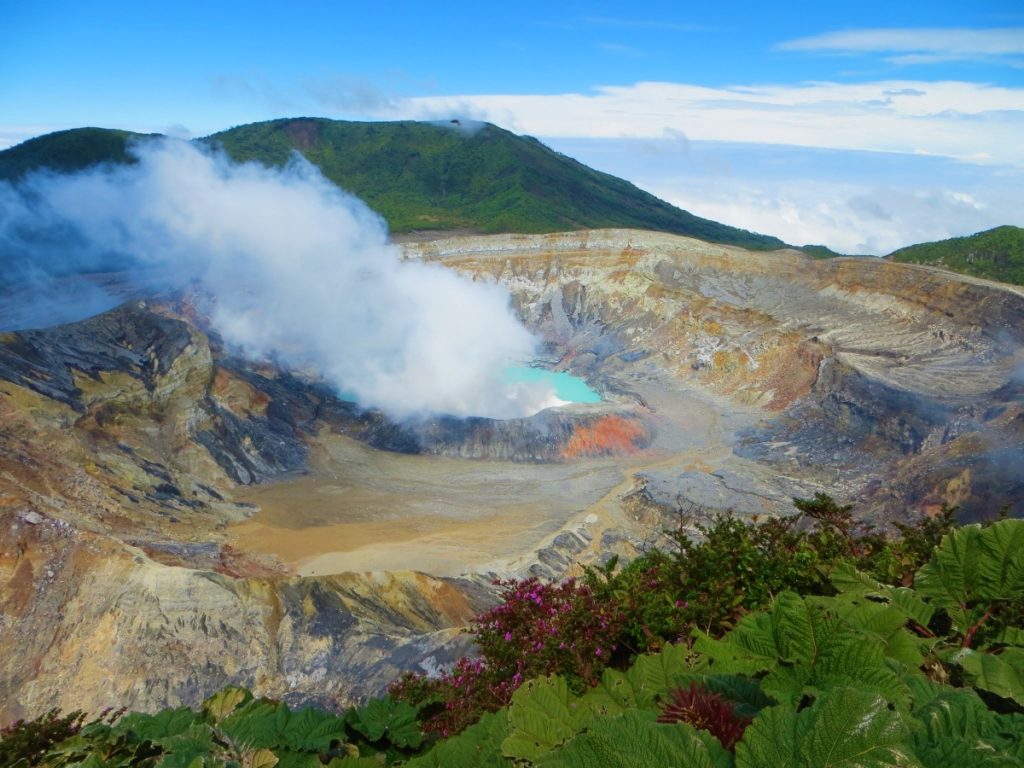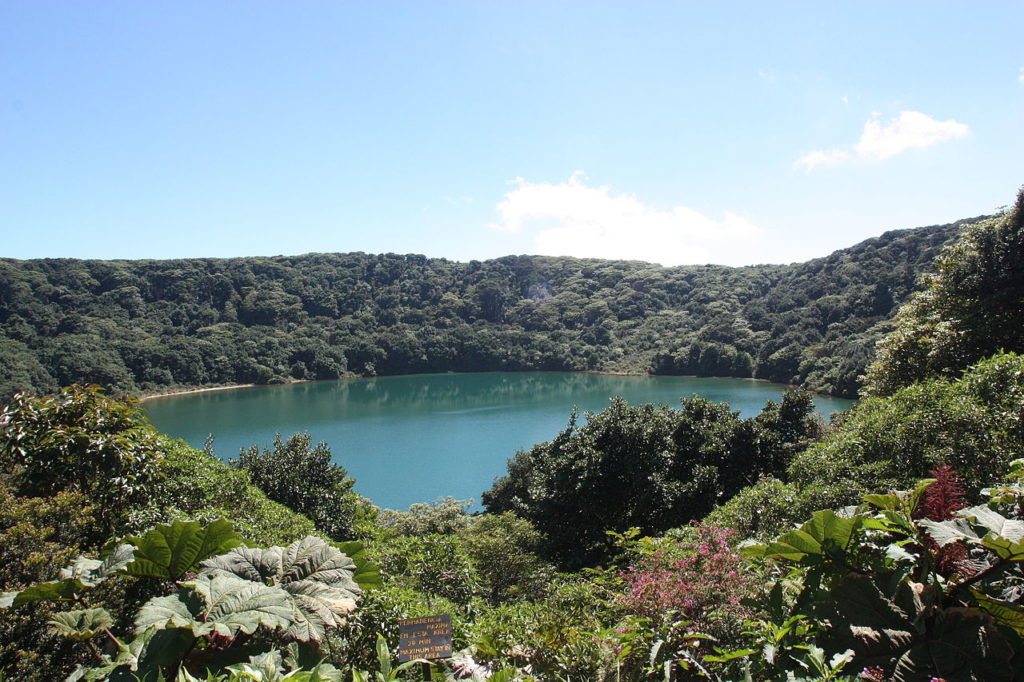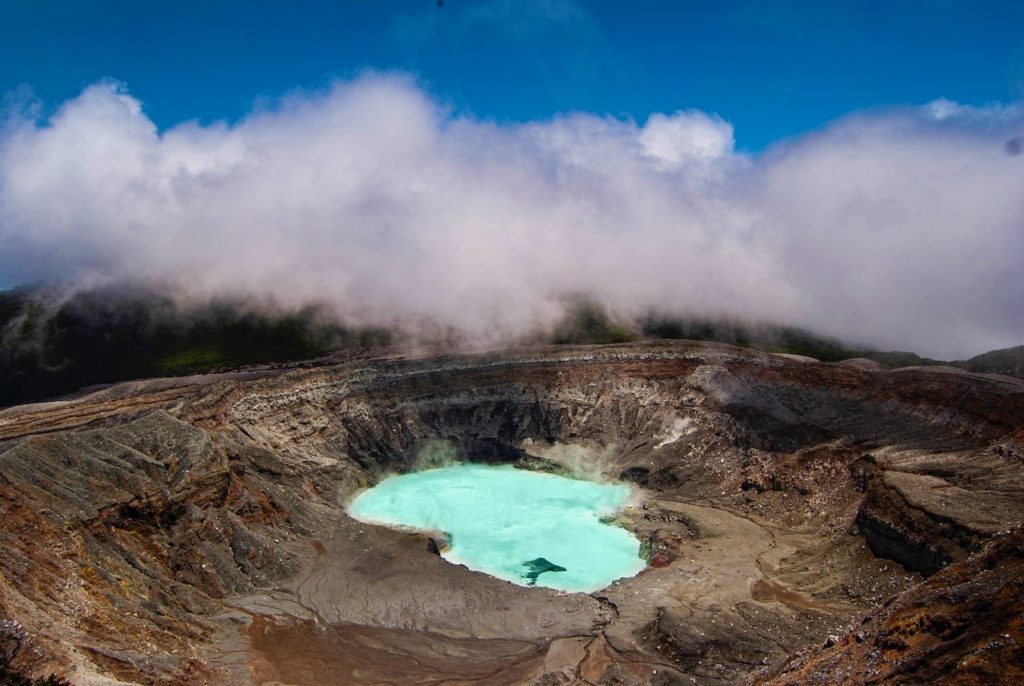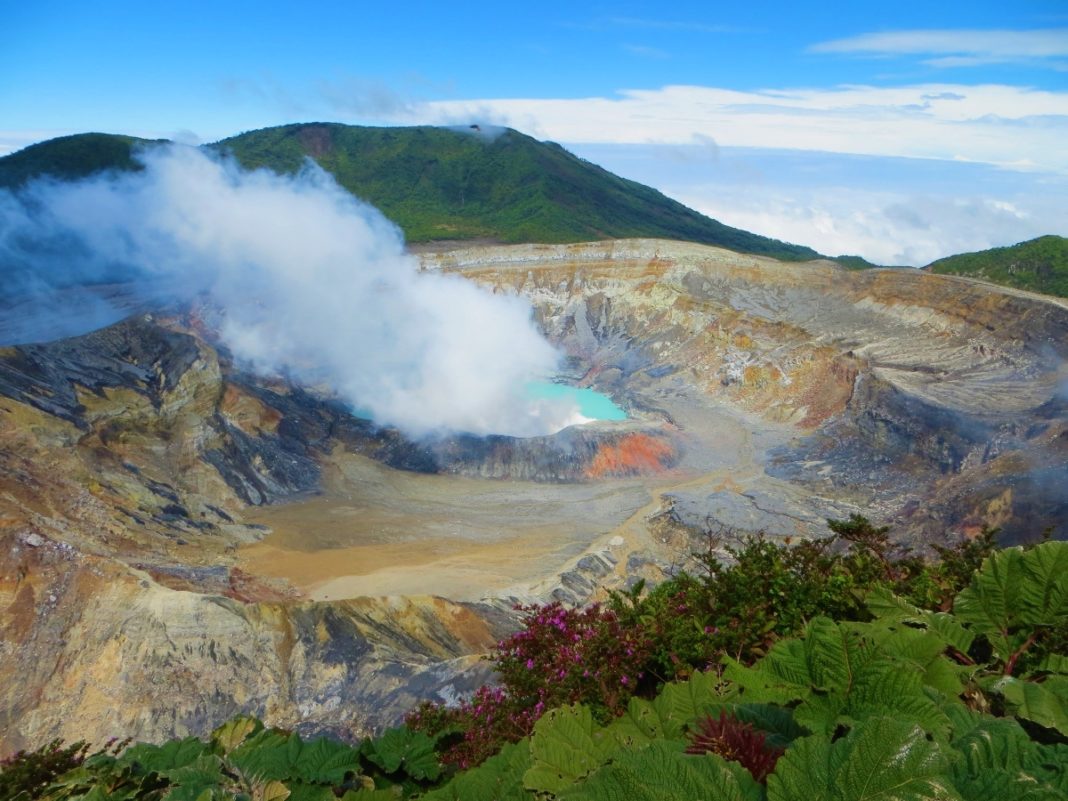The landscape of Poás Volcano is a dramatic and awe-inspiring one. The volcano itself is a towering stratovolcano, with a broad base and a conical peak. It is covered in lush green vegetation, with patches of bare rock and ash exposed on the upper slopes. The walls of the crater are steep and covered in loose rock and ash. Fumaroles, which are vents that emit volcanic gases, are scattered throughout the crater floor. The air in the crater is often thick with the smell of sulfur.

The landscape surrounding Poás Volcano is also diverse. The volcano is located in a cloud forest, which is characterized by dense vegetation and high humidity. The cloud forest is home to a variety of plants and animals, including orchids, bromeliads, and monkeys.

There are two crater lakes near the summit. The northern lake is known as the Laguna Caliente (“hot lagoon”) and is located at a height of 2,300 m in a crater approximately 0.3 km wide and 30 m deep. It is one of the world’s most acidic lakes. The bottom of this lake is covered with a layer of liquid sulfur. Acidity, lake temperature fluctuations, and a complex, toxic sulfur and iron chemistry (conjectured to be like conditions on early Earth and Mars) limit aquatic life to specially adapted Acidiphilium bacteria. Lake Botos, the southern lake, fills an inactive crater, which last erupted in 7500 BC. It is cold and clear and is surrounded by a cloud forest within the National Park boundaries.

In respect of it being ‘an iconic and type example of an arc shield-like massive stratovolcano and type example of an active crater lake complex’, the International Union of Geological Sciences (IUGS) included ‘The Poás volcano’ in its assemblage of 100 ‘geological heritage sites’ around the world in a listing published in October 2022. The organization defines an IUGS Geological Heritage Site as ‘a key place with geological elements or processes of international scientific relevance used as a reference, and with a substantial contribution to the development of geological sciences through history.’

The landscape of Poás Volcano is constantly changing due to the volcano’s active nature. Eruptions can cause landslides, ash fall, and other changes to the landscape. However, the volcano is also a beautiful and dynamic place to visit, with a variety of features that reflect its active nature.
According to the Internet









![[HONORARY PROFESSOR OF RECORD FOR PRACTICE AND EMPIRICAL RESULTS – 2024] RECORD HOLDER CHU BAO QUE (BAC GIANG PROVINCE, VIETNAM)](https://worldmark.world/wp-content/uploads/2024/05/z5401509010514_2898fa0bcee3af78744ceb5f3984a5c8-218x150.jpg)





